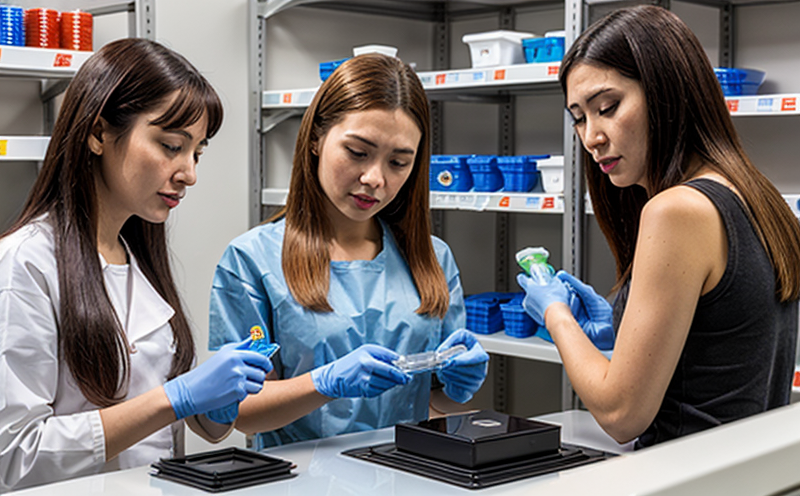SAE J844 Plastic Hose Performance Testing
The SAE J844 standard provides a comprehensive framework for evaluating the performance of plastic hoses used in automotive and industrial applications. This service is particularly crucial for ensuring that plastic hose components meet stringent quality standards, withstand environmental stresses, and function reliably under real-world conditions.
Under this test protocol, hoses are subjected to various mechanical and physical stress tests designed to simulate the operating environment they will encounter during use. The key parameters include pressure resistance, burst strength, elongation at break, tensile strength, flexibility, heat aging, and chemical compatibility. These tests are critical for ensuring that plastic hoses do not fail prematurely due to environmental factors or operational demands.
The SAE J844 test method is widely recognized for its relevance in the automotive industry, where reliability and safety are paramount. It ensures that plastic hose components can withstand the rigors of high-pressure systems without degradation over time. The testing process involves careful specimen preparation, precise instrumentation, and adherence to strict acceptance criteria.
One of the most challenging aspects of SAE J844 testing is ensuring that hoses perform consistently under a wide range of conditions. This includes withstanding extreme temperatures, maintaining flexibility in cold environments while retaining structural integrity in hot conditions, and resisting chemicals commonly found in automotive fluids such as gasoline and lubricants.
The test procedure typically involves the following steps:
- Specimen preparation: Hoses are cut to standard lengths and cleaned to remove any manufacturing residues.
- Pressure application: The hoses are subjected to specified pressure levels to assess their burst strength and resistance to leakage.
- Bending and flexing tests: Hoses undergo repeated bending cycles to evaluate their flexibility and durability in dynamic applications.
- Tensile testing: Specimens are pulled until failure to determine the maximum tensile stress they can withstand.
- Heat aging: Samples are exposed to elevated temperatures for extended periods to assess long-term thermal stability.
The results of these tests provide critical insights into the performance characteristics of plastic hoses. Compliance with SAE J844 ensures that products meet stringent quality standards, enhancing safety and reliability in automotive systems. This service is invaluable for manufacturers seeking to ensure their components perform consistently across diverse operational conditions.
Industry Applications
The SAE J844 Plastic Hose Performance Testing service finds extensive application in the automotive sector, where it is used to evaluate hoses in various systems such as fuel delivery, hydraulic braking, and cooling. The stringent testing requirements ensure that plastic components meet durability expectations under real-world conditions.
In addition to automotive applications, this testing method is also applicable in industrial settings where high-pressure and chemical resistance are essential. For instance, it can be used to test hoses for use in manufacturing processes involving harsh chemicals or in environments with fluctuating temperatures. This ensures that the components selected are robust enough to withstand the specific challenges of these industries.
The testing process is also beneficial for quality assurance departments within manufacturing plants. It helps them identify potential weaknesses early in the production cycle, allowing for corrective actions before mass production begins. By adhering to SAE J844 standards, manufacturers can enhance product reliability and customer satisfaction.
Customer Impact and Satisfaction
The implementation of SAE J844 Plastic Hose Performance Testing has a significant impact on the quality assurance processes within manufacturing facilities. By adhering to this standard, companies demonstrate their commitment to delivering high-quality products that meet international safety and performance criteria.
Customers benefit from enhanced product reliability and extended lifespan due to the robust testing process. This leads to fewer failures in the field, which translates into increased customer satisfaction and reduced warranty claims. Moreover, compliance with SAE J844 can be a competitive advantage for manufacturers seeking to differentiate themselves in the market.
For quality managers and compliance officers, this service provides peace of mind knowing that their products meet rigorous international standards. This ensures regulatory compliance and enhances brand reputation. For R&D engineers, it offers valuable data on material performance under various conditions, facilitating continuous improvement in product design.
Competitive Advantage and Market Impact
- Innovation Leadership: By staying ahead of industry standards like SAE J844, companies can innovate with confidence. This helps them introduce products that meet the evolving needs of customers.
- Market Differentiation: Compliance with this standard sets a benchmark for quality and reliability, helping manufacturers stand out in competitive markets.
- Risk Mitigation: Testing ensures that potential issues are identified early, reducing the risk of costly product recalls and legal disputes.
- Informed Decision-Making: Real-world test results provide valuable data for decision-makers to optimize production processes and materials selection.
The service also contributes significantly to market impact by fostering trust among consumers. By ensuring that products meet stringent performance requirements, manufacturers can build a strong brand reputation and attract loyal customers.





